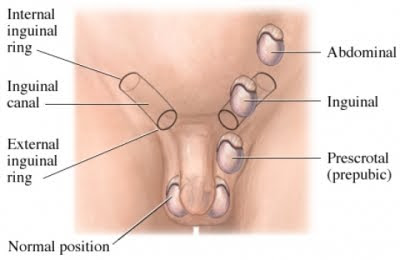Having difficulty getting pregnant? There are some simple ways to help nature along.
If you've been trying to start a family without success, making some simple lifestyle changes may increase your chance of conception and help to ensure a healthy pregnancy. However, there are some factors, such as age, ovulation problems, sperm disorders and damaged fallopian tubes, that you can't change.
Changes you can make
Eat well: if you're a woman, a nutritious, balanced diet will help improve your general health and wellbeing, and ensure your body is able to nourish a baby. If you're a man, healthy eating is also important for sperm production.
Choose a varied diet containing fresh fruit and vegetables, bread, potatoes, rice and other cereals (wholegrain, where possible), milk and dairy products, lean meat, fish and other sources of protein.
Being overweight or very underweight can disrupt your periods and hinder conception
Watch your weight: being overweight or very underweight can disrupt your periods and hinder conception. A woman with a body mass index (BMI) of more than 29 or less than 19 may find it more difficult to conceive.
To work out your BMI, divide your weight in kilograms by your height in metres squared (your height in metres multiplied by itself) or use our BMI calculator. Fertility treatment may not be possible for very overweight or obese women.
Drink wisely: the government advises women trying to conceive to avoid alcohol completely. Men shouldn't drink more than three or four units a day, and should avoid binge drinking to prevent damage to sperm.
Stop smoking: smoking has been linked to infertility and early menopause in women, and sperm problems in men. It also reduces the success of fertility treatments.
Be active: regular moderate exercise (such as brisk walking) for at least 30 minutes a day will help to keep you fit for conception and help to control your weight.
Exercise also reduces stress and boosts levels of endorphins, the body's own feel-good hormones.
Keep cool: for optimum sperm production, the testicles need to be a couple of degrees cooler than the rest of the body. Avoid tight underwear and jeans, and excessively hot baths and saunas.
Think about your job: occupations that involve sitting for long periods, such as long-distance lorry driving, or exposure to environmental chemicals such as paints or pesticides, may affect sperm quality. If this is an issue, discuss it with your work supervisor. Watch an exclusive video interview with Professor William Ledger.
Manage stress: stress doesn't cause infertility, but excessive anxiety can sometimes upset the menstrual cycle. Try to reduce stress levels and give yourself time to relax.
Take folic acid: all women trying for a baby should take a supplement of 400mcg of folic acid a day to help prevent birth defects such as spina bifida.
Check drugs: certain prescription drugs can reduce the chance of conception. If you're taking regular medication, talk to your doctor.
Marijuana and cocaine can affect sperm counts.
Things you can't change
Not all factors affecting fertility are within your control.
Women
For women, the following may affect conception:
Ovulation problems: sometimes, women don't ovulate (release an egg each month) or do so only occasionally.
Reasons include:
* Polycystic ovary syndrome (PCOS), in which numerous small cysts develop on the ovaries and ovulation is erratic.
* The side effects of some medications, such as anti-inflammatory painkillers, chemotherapy and radiation treatment (for example, for cancer).
* Premature ovarian failure (early menopause).
* Hormonal imbalances.
Blocked fallopian tubes: below are the most common causes of inflamed and blocked tubes.
* Sexually transmitted infections (STIs) such as chlamydia and (more rarely) gonorrhoea.
* Endometriosis, in which cells from the lining of the womb implant elsewhere, such as the ovaries.
* Pelvic inflammatory disease, which can be caused by chlamydia and other STIs.
* Previous pelvic surgery - for example, for appendicitis or peritonitis.
Women in their early 20s are about twice as likely to get pregnant as women in their late 30s
Your age: the quantity and quality of your eggs decline with age. Women in their early 20s are about twice as likely to get pregnant as women in their late 30s.
Problems in the womb: problems with the lining of the womb, such as fibroids or physical abnormalities of the womb, can prevent the successful implantation of a fertilised egg.
Other medical conditions: conditions that can affect female fertility include diabetes, epilepsy, thyroid and bowel diseases, as well as gynaecological problems such as a previous ectopic pregnancy or more than one miscarriage.
Men
Male infertility is usually caused by sperm problems. These include:
* Low sperm count (not producing enough sperm), poor sperm quality or poor motility (slow-moving sperm).
* Previous inflammation of, or injury to, the testicles. This includes inflammation caused by mumps, drug treatment, radiotherapy or sporting injuries.
* A previous bacterial infection.
* Previous surgery - for example, to correct a hernia - or undescended or twisted testicles, which can damage the tubes or impair blood flow to the testicles.
* Diabetes, medication or urinary tract surgery can cause retrograde ejaculation, when sperm travels backwards into the bladder.
* Sexual problems, such as the inability to have an erection.









